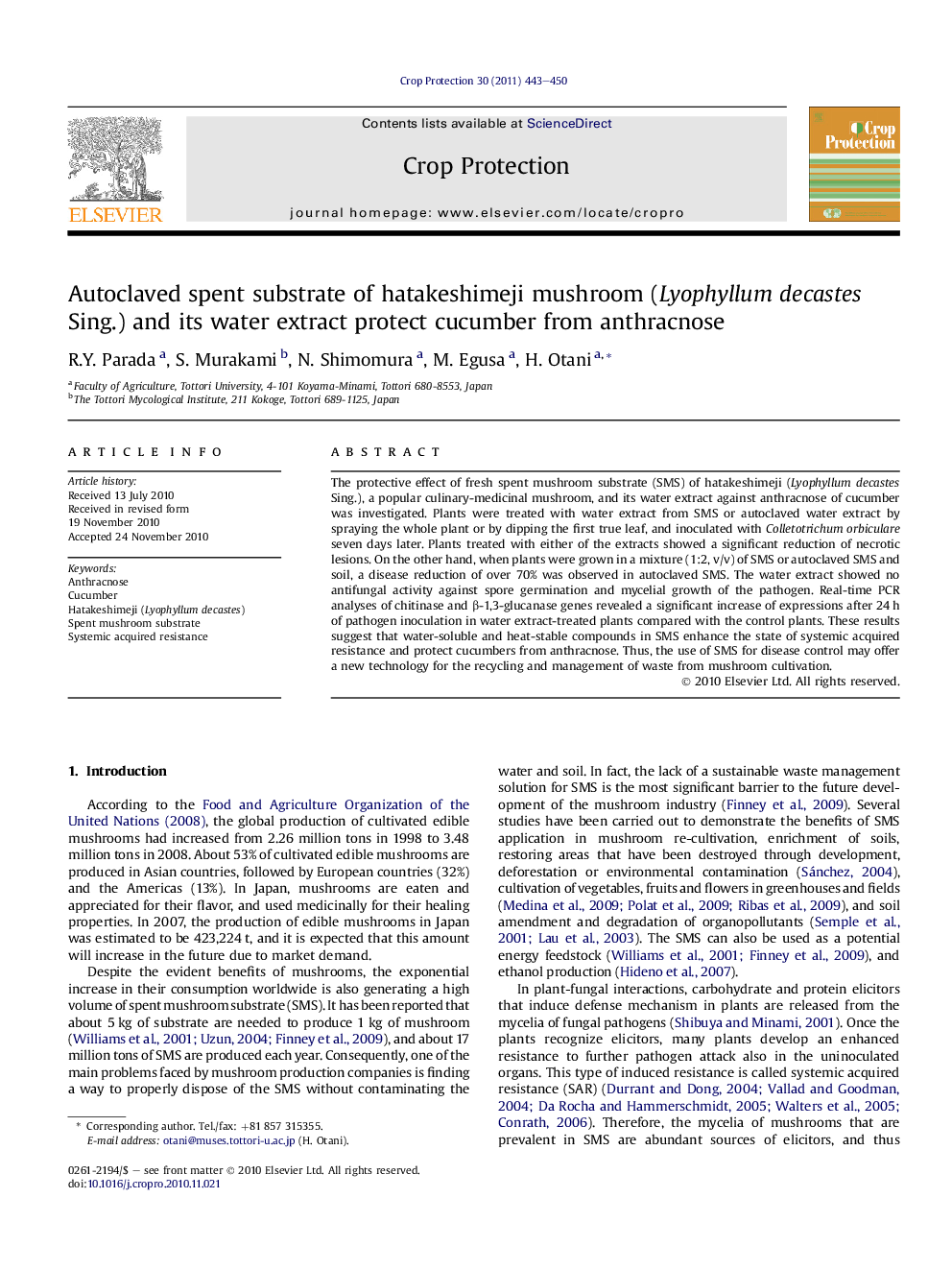| Article ID | Journal | Published Year | Pages | File Type |
|---|---|---|---|---|
| 4507149 | Crop Protection | 2011 | 8 Pages |
The protective effect of fresh spent mushroom substrate (SMS) of hatakeshimeji (Lyophyllum decastes Sing.), a popular culinary-medicinal mushroom, and its water extract against anthracnose of cucumber was investigated. Plants were treated with water extract from SMS or autoclaved water extract by spraying the whole plant or by dipping the first true leaf, and inoculated with Colletotrichum orbiculare seven days later. Plants treated with either of the extracts showed a significant reduction of necrotic lesions. On the other hand, when plants were grown in a mixture (1:2, v/v) of SMS or autoclaved SMS and soil, a disease reduction of over 70% was observed in autoclaved SMS. The water extract showed no antifungal activity against spore germination and mycelial growth of the pathogen. Real-time PCR analyses of chitinase and β-1,3-glucanase genes revealed a significant increase of expressions after 24 h of pathogen inoculation in water extract-treated plants compared with the control plants. These results suggest that water-soluble and heat-stable compounds in SMS enhance the state of systemic acquired resistance and protect cucumbers from anthracnose. Thus, the use of SMS for disease control may offer a new technology for the recycling and management of waste from mushroom cultivation.
Research highlights► Water-extract from spent mushroom substrate (SMS) enhances state of SAR in cucumber. ►Cucumber plants treated with water-extract are protected from anthracnose. ►Use of SMS for disease control offers a new technology for recycling of waste.
